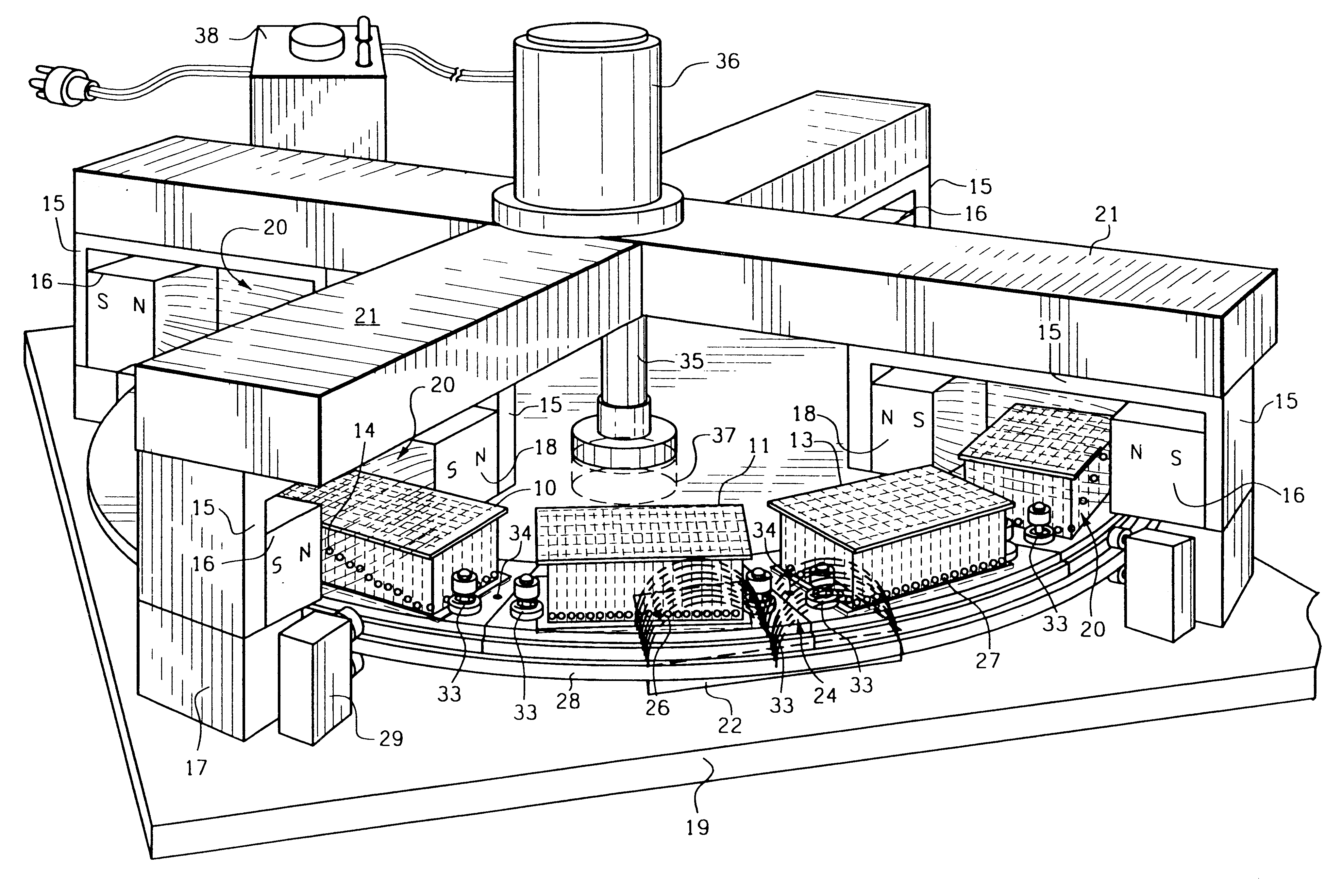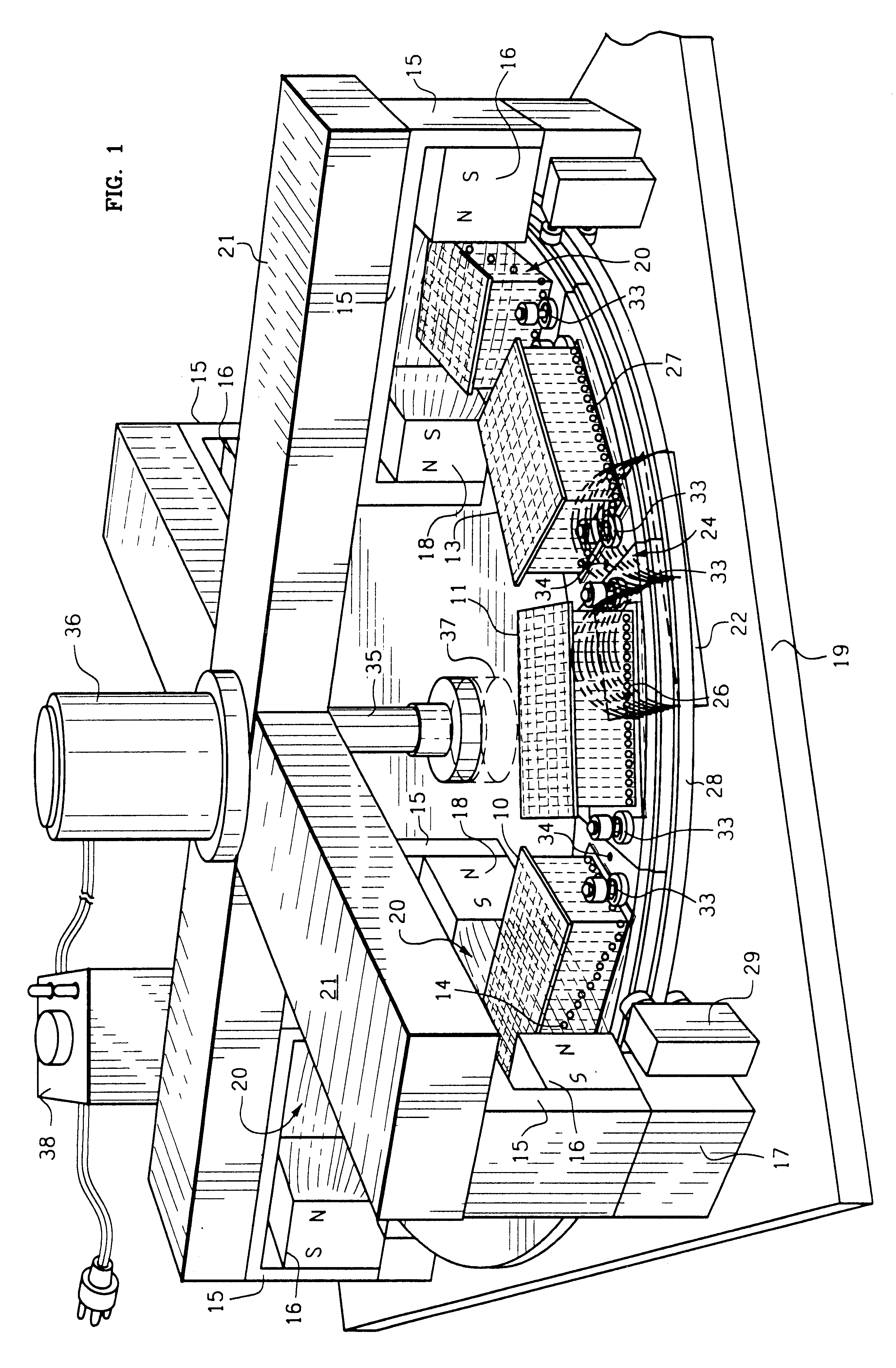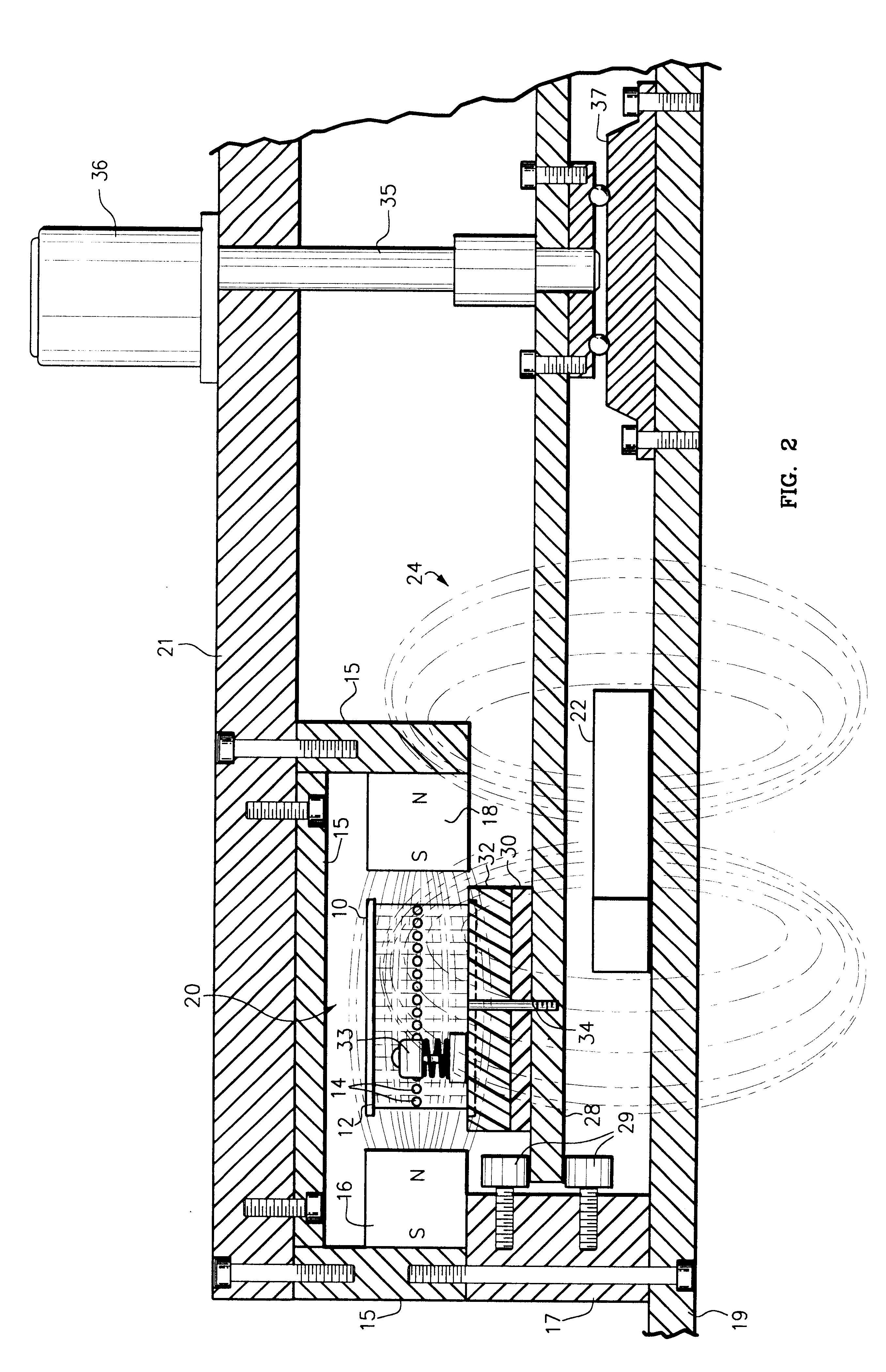Magnetic levitation stirring devices and machines for mixing in vessels
a stirring device and magnetic levitation technology, which is applied in the direction of material analysis through optical means, instruments, transportation and packaging, etc., can solve the problems of difficult aeration, inability to adequately resuspension, particulates, etc., to increase the liquid surface area, stir and aerate tall columns of liquids with ease, and increase the effect of liquid surface area
- Summary
- Abstract
- Description
- Claims
- Application Information
AI Technical Summary
Benefits of technology
Problems solved by technology
Method used
Image
Examples
Embodiment Construction
FIG. 1 illustrates how stir balls (14) are levitated as they enter the dipole focused levitation magnetic field (20) of the carousel levitation magnets (16 & 18) with their focusing dipole superstructure (15). As the deep well microplate (10) approaches the dipole focused magnetic levitation field (20) the stir balls (14) in the leading wells (12) are levitated. The closer to the dipole focused magnetic field (20) the greater the levitation. The stir balls (26) in the trailing deep well microplate (11) are pulled down to the bottom of the deep well microplate by the magnetic field (24) of a pull down magnet (22) located on the base plate (19) under the carousel wheel plate (28). The unaffected stir balls (27) in the third deep well microplate (13) are not influenced by either the dipole focused levitation magnetic field (20) or the pull down magnetic field (24) as they are between both magnetic fields. The steel dipole structure (15) is attached to the base plate (19) through an alu...
PUM
| Property | Measurement | Unit |
|---|---|---|
| magnetic field | aaaaa | aaaaa |
| magnetic fields | aaaaa | aaaaa |
| diameters | aaaaa | aaaaa |
Abstract
Description
Claims
Application Information
 Login to View More
Login to View More - R&D
- Intellectual Property
- Life Sciences
- Materials
- Tech Scout
- Unparalleled Data Quality
- Higher Quality Content
- 60% Fewer Hallucinations
Browse by: Latest US Patents, China's latest patents, Technical Efficacy Thesaurus, Application Domain, Technology Topic, Popular Technical Reports.
© 2025 PatSnap. All rights reserved.Legal|Privacy policy|Modern Slavery Act Transparency Statement|Sitemap|About US| Contact US: help@patsnap.com



